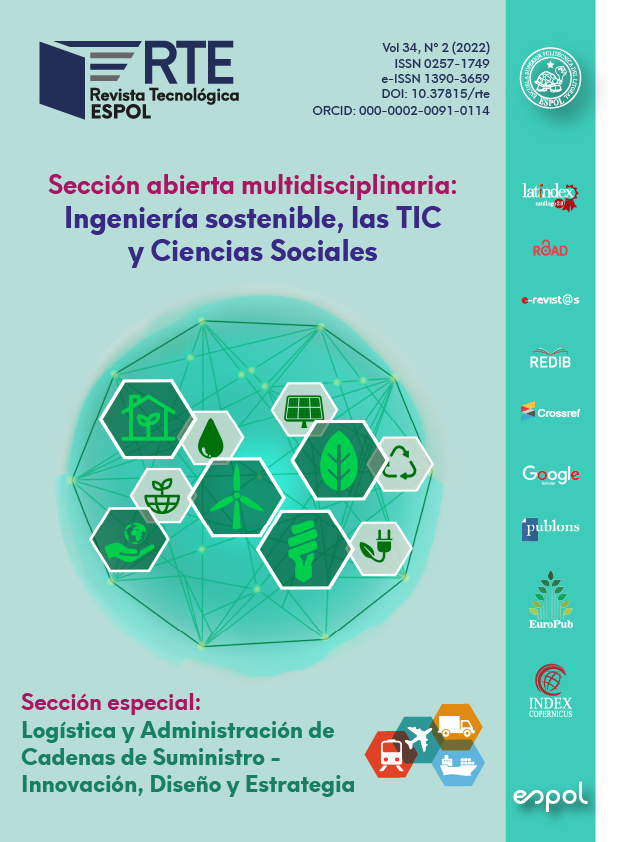En América latina, gran parte de la producción agrícola está a cargo de pequeños productores con bajos nivel de tecnificación y carentes de procesos logísticos robustos, lo cual limita la posibilidad de acceder a grandes mercados con precios competitivos, afectando sus posibilidades de crecimiento económico y bienestar. Esta investigación desarrolla un modelo para la localización óptima de instalaciones (centros de acopio) para productores agrícolas, donde se logra consolidación de los productos. El propósito es reducir costos logísticos y de transporte mediante explotación conjunta de economías de escala, considerando la variabilidad de algunos de los factores del modelo y analizando escenarios. Las sinergias entre productores permitirían aumentar el acceso a grandes mercados, facilitar procesos de consolidación y agregación de valor. Se formuló un modelo de programación lineal entero mixto que consiste en una red de centros de acopio compartidos, multiproducto, multicliente, multiperíodo, con opción de viajes directos o a través de los centros consolidadores. El sistema está apoyado en una plataforma web prototipo que permitirá a los agro-productores mayor participación y poder de negociación comercial. Se realizó una aplicación del modelo a pequeños productores del departamento Atlántico, Colombia, cuyos resultados verificaron las bondades de la propuesta. Este estudio comprobó los centros de acopio generan potenciales beneficios económicos para el sistema. Los principales factores que influyen los resultados de la aplicación del modelo son los niveles de producción, la distancia transportada y calidad de productos.

Esta obra está bajo una licencia internacional Creative Commons Atribución-NoComercial 4.0.
Referencias
Abaunza O., A., & León G., A. (2011). Diseño de la operatividad del centro de distribución de Colfrigos S.A. haciendo uso de un WMS – regional Bogotá. Universidad Libre, 4(3), 410–419.
Agronet. (2019). Evaluaciones Agropecuarias (EVA). https://www.agronet.gov.co/estadistica/Paginas/home.aspx?cod=59
Andrade-Pineda, J. L., Canca, D., & Gonzalez-R, P. L. (2015). On modelling non-linear quantity discounts in a supplier selection problem by mixed linear integer optimization. Annals of Operations Research, 258(2), 301–346. https://doi.org/10.1007/s10479-015-1941-2
Benavides, L. G. (2019). La tienda virtual Comproagro llegó a 26.000 usuarios y lanzará su propia app. AGRONEGOCIOS, Agro. https://www.agronegocios.co/agricultura/la-tienda-virtual-comproagro-llego-a-26000-usuarios-y-lanzara-su-propia-app-2838760
Cantillo, V., & López, M. F. (2008). Monografía de productos G21: Legumbres y Horatlizas.
Cruz Thiriat, R., Ramírez-Vélez, R., Martínez-Torres, J., & Correa-Bautista, J. E. (2005). Encuesta nacional de la situación nutricional en Colombia. In Revista Chilena de Nutricion (Vol. 44, Issue 4). https://doi.org/10.4067/s0717-75182017000400307
DANE. (2005). Proyecciones de población municipal del 2019 en base a la del 2005.
DNA. (2021). Cuentas nacionales anuales. Http://Www.Dane.Gov.Co/Index.Php/Estadisticas-Por-Tema/Cuentas-Nacionales/Cuentas-Nacionales-Anuales.
Gobernación del Atlántico, & UPRA. (2018). Priorización de alternativas productivas y diagnóstico del mercado de productos agropecuarios del departamento del atlántico. Iii, 1–78.
Gran Abastos. (2021). Mercadeo. https://www.granabastos.com.co/servicios/
Guthrie, C., Fosso-Wamba, S., & Arnaud, J. B. (2021). Online consumer resilience during a pandemic: An exploratory study of e-commerce behavior before, during and after a COVID-19 lockdown. Journal of Retailing and Consumer Services. https://doi.org/10.1016/j.jretconser.2021.102570
Hartman, B. C., & Dror, M. (2003). Optimizing centralized inventory operations in a cooperative game theory setting. IIE Transactions (Institute of Industrial Engineers), 35(3), 243–257. https://doi.org/10.1080/07408170304363
Keskin, B. B., & Üster, H. (2007). Meta-heuristic approaches with memory and evolution for a multi-product production/distribution system design problem. European Journal of Operational Research, 182(2), 5. https://doi.org/10.1016/j.ejor.2006.07.034
Lu, H., Li, L., Zhao, X., & Cook, D. (2018). A model of integrated regional logistics hub in supply chain. Enterprise Information Systems, 12(10), 1308–1335. https://doi.org/10.1080/17517575.2018.1533588
Ministerio de transporte. (2019). SICETAC. https://plc.mintransporte.gov.co/Runtime/empresa/ctl/SiceTAC/mid/417
Montiel Paternina, S. (2013). Impacto del tlc con estados unidos sobre los sectores económicos colombianos. Saber, Ciencia y Libertad, 8(1), 125–130. https://doi.org/10.18041/2382-3240/saber.2013v8n1.1885
Murillo, S. (2011). Beneficios del comercio electrónico.
Nagarajan, M., & Sošić, G. (2008). Game-theoretic analysis of cooperation among supply chain agents: Review and extensions. European Journal of Operational Research, 187(3), 719–745. https://doi.org/10.1016/j.ejor.2006.05.045
Rincón Munar, J. N. (2019). Productividad en el transporte de carga por carretera en Colombia.
Sebastián Medina Cadena. (2018). La Influencia Del E-Commerce En La Dinamización De Los Negocios Internacionales Entre El 2008 Y El 2018: Un Análisis Comparativo Entre Colombia Y México. 83. http://repository.uamerica.edu.co/bitstream/20.500.11839/6936/1/5122427-2018-II-NIIE.pdf
SPDA. (2016). Plan de Desarrollo “Atlántico Líder.”
Tsiakis, P., Shah, N., & Pantelides, C. C. (2001). Design of multi-echelon supply chain networks under demand uncertainty. Industrial and Engineering Chemistry Research, 40(16), 3585–3604. https://doi.org/10.1021/ie0100030
Tu salario.org. (2021). Guardias de protección. https://tusalario.org/colombia/carrera/funcion-y-salario/guardias-de-seguridad
UPRA. (2017). Plan de desarrollo: Atlántico líder. Ministerio de Agricultura, 54.
Yang, J., & Wang, Z. (2015). Research on the application of e-commercial modes for agro-food in mainland China: O2O and B2C. 2015 International Conference on Logistics, Informatics and Service Science, LISS 2015. https://doi.org/10.1109/LISS.2015.7369645







